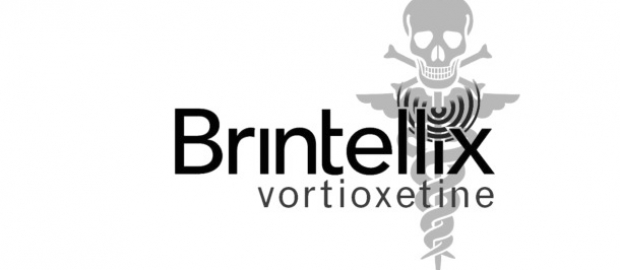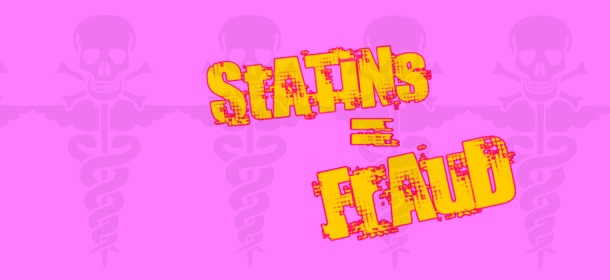Featured
When Half a Million Americans Died and Nobody Noticed
The number of deaths due to Vioxx may be half a million, not the 60,000 originally and semi-officially acknowledged. Alexander Cockburn brings his incisive political analysis to show that life is treated as cheap in America.
by Alexander Cockburn
ARE American lives cheaper than those of the Chinese? It’s a question raised by Ron Unz, publisher of The American Conservative, who has produced a compelling comparison between the way the Chinese dealt with one of their drug scandals – melamine in baby formula – and how the US handled the Vioxx aspirin-substitute disaster.
The Chinese scandal surfaced in 2008, shortly before the Beijing Olympics. Crooked dairymen diluted their milk products, then added a plastic chemical compound called melamine to raise the apparent protein content back to normal levels. Nearly 300,000 babies across China suffered urinary problems, with many hundreds requiring lengthy hospitalisation for kidney stones. Six died.
Long prison sentences were handed down and a couple of the guiltiest culprits were tried and executed for their role. Throughout these events, American media coverage was extensive, with appropriate sneering about the Chinese leadership’s indifference to human life.
Four years earlier, in September 2004, Merck, one of America’s largest pharmaceutical companies, issued a sudden recall of Vioxx, its anti-pain medication widely used to treat arthritis-related ailments.
The recall came just days after Merck discovered that a top medical journal was about to publish a study by an FDA (Food and Drug Administration) investigator indicating that the drug in question greatly increased the risk of fatal heart attacks and strokes and had probably been responsible for at least 55,000 American deaths during the five years it had been on the market.
It soon turned out Merck had known of potential lethal side effects even before launching Vioxx in 1999, but had brushed all such disturbing tests under the rug.
With a TV ad budget averaging a hundred million dollars per year, Vioxx swiftly became one of Merck’s bestsellers, generating over $2 billion in yearly revenue. Twenty-five million Americans were eventually prescribed Vioxx as an aspirin-substitute thought to produce fewer complications.
There was a fair amount of news coverage after the recall, but pretty slim considering the alleged 55,000 death toll. A class-action lawsuit dragged its way through the courts for years, eventually being settled for $4.85 billion in 2007.
When the scandal first broke, Merck’s stock price collapsed, and many believed that the company could not possibly survive, especially after evidence of a deliberate corporate conspiracy surfaced. Instead, Merck’s stock price eventually reached new heights in 2008 and today it is just 15 per cent below where it stood before the disaster.
The year after the scandal unfolded, Merck’s long-time CEO resigned and was replaced by one of his top lieutenants. But he retained the $50 million in financial compensation he had received over the previous five years. Neither he nor any other Merck executives was charged with corporate malfeasance.
Senior FDA officials apologised for their lack of effective oversight and promised to do better in the future. The Vioxx scandal began to sink into the vast marsh of semi-forgotten international pharmaceutical scandals.
Then in 2005, as he now remembers it, Ron Unz “was reading my morning newspapers, as I always do, and noticed tiny items about an unprecedented drop in the American death rate. Hmm I said, I wonder if that might have anything to do with all those other stories about that deadly drug recently taken off the market and all the resulting lawsuits.”
The year after Vioxx was pulled from the market, the New York Times and other media outlets were running minor news items, usually down-column, noting that American death rates had undergone a striking and completely unexpected decline. These were what Unz, a dedicated news browser, was reading.
Typical was the headline on a short article that ran in the 19 April 2005 edition of USA Today: ‘USA Records Largest Drop in Annual Deaths in at Least 60 Years.’ During that one year, American deaths fell by 50,000 despite the growth in both the size and the age of the nation’s population. Government health experts were quoted as being greatly “surprised” and “scratching [their] heads” over this strange anomaly, which was led by a sharp drop in fatal heart attacks.
For his Chinese melamine/Vioxx comparison, Unz went back to those 2005 stories. Quick scrutiny of the most recent 15 years worth of national mortality data provided on the US Government’s Centers for Disease Control and Prevention website offered Unz some useful clues.
“We find the largest rise in American mortality rates occurred in 1999, the year Vioxx was introduced, while the largest drop occurred in 2004, the year it was withdrawn,” says Unz. “Vioxx was almost entirely marketed to the elderly, and these substantial changes in the national death-rate were completely concentrated within the 65-plus population.
“The FDA studies had proven that use of Vioxx led to deaths from cardiovascular diseases such as heart attacks and strokes, and these were exactly the factors driving the changes in national mortality rates.”
The impact of these shifts, Unz points out, was not small. After a decade of remaining roughly constant, the overall American death rate began a substantial decline in 2004, soon falling by approximately five per cent, despite the continued ageing of the population. This drop corresponds to roughly 100,000 fewer deaths per year. The age-adjusted decline in death rates was considerably greater.
“Patterns of cause and effect cannot easily be proven,” Unz continues. “But if we hypothesise a direct connection between the recall of a class of very popular drugs proven to cause fatal heart attacks and other deadly illnesses with an immediate drop in the national rate of fatal heart attacks and other deadly illnesses, then the statistical implications are quite serious.”
Unz makes the point that the users of Vioxx were almost all elderly, and it was not possible to determine whether a particular victim’s heart attack had been caused by Vioxx or other factors. But he concludes: “Perhaps 500,000 or more premature American deaths may have resulted from Vioxx [my italics], a figure substantially larger than the 3,468 deaths of named individuals acknowledged by Merck during the settlement of its lawsuit. And almost no one among our political or media elites seems to know or care about this possibility.”
I remarked to Unz that it seemed truly incredible that a greater than expected death rate of this dimension should scarcely have caused a ripple.
“I’m just as astonished,” he said. “From 2004 onwards, huge numbers of America’s toughest trial lawyers were suing Merck for billions based on Vioxx casualties – didn’t they notice the dramatic drop in the national death rate?
“The inescapable conclusion is that in today’s world and in the opinion of our own media, American lives are quite cheap, unlike those in China.
“Besides,” says Unz laughing, “it shows the stupidity of our political leaders that they didn’t seize upon this great opportunity. They should have just renamed Vioxx the ‘Save Social Security Drug,’ and distributed it free in very large doses to everyone, starting on their 65th birthday. Maybe they should have even made it mandatory, three times per day. At sufficiently large levels of national consumption, Vioxx could have almost singlehandedly eliminated all our serious budget deficit problems. ‘Vioxx – The Miracle Anti-Deficit Drug’.”
Tagged 60000 lives, alexander cockburn vioxx, big pharma, conventional medicine, fda vioxx, food and drug administration, half a million killed by vioxx, life cheap in america, life cheap in china, modern medicine, pharmaceutical drugs, pharmaceuticals, vioxx deaths















Pingback: Marijuana eases painful MS muscle cramping | Try2connect News Blog
Pingback: Marijuana eases painful MS muscle cramping
Pingback: Marijuana eases painful MS muscle cramping | educationofhealth.com
Pingback: Over-the-Counter NSAID Kills, But Docs & Regulators Ignore EvidenceGaia Health